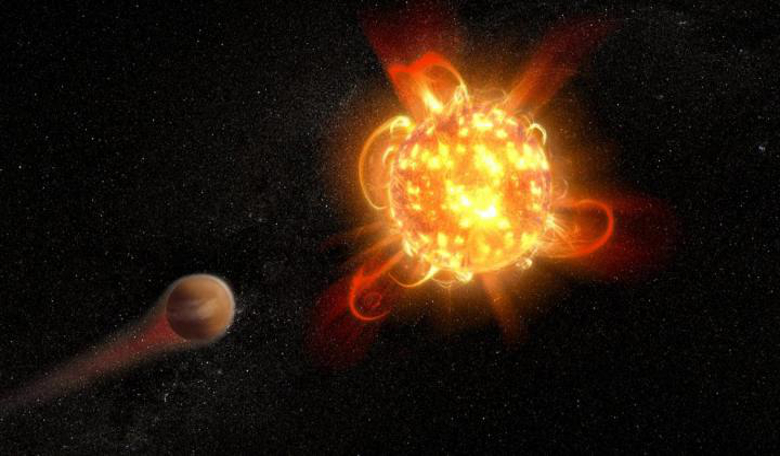It could be bad news for life trying to establish itself on a planet orbiting a young red dwarf, as a new study indicates that these most prevalent of stars are prone to daily, if not more, violent outbursts or superflares which erupt with 100 to 1000 times more energy than that of older, low-mass stars.
Red dwarf stars are incredibly common; about three-quarters of the stars in our Milky Way galaxy alone are red dwarfs. Given their abundance, astronomers think that most red dwarfs have systems of planets orbiting them. Indeed, most of the exoplanets that have been found in a star’s ”habitable-zone" orbit red dwarfs, including Proxima Centauri, the nearest star to our Sun.
Red dwarfs therefore make ideal targets in which to search for life and one such programme set up to study these commonplace stars is HAZMAT, which stands for "HAbitable Zones and M dwarf Activity across Time.
HAZMAT uses the observing power of the Hubble Space Telescope to survey red dwarfs (also known as M dwarfs) in ultraviolet light at three different ages – young, intermediate, and old. At the moment, HAZMAT is concentrating on monitoring stars in the young age bracket i.e red dwarfs that are around 40 million years old, give or take a few million years. Next on the list is intermediate stars - those that have reached the grand old age of 650 million years old.
"The goal of the HAZMAT program is to understand the habitability of planets around low-mass stars," explains Evgenya Shkolnik, an assistant professor in ASU's School of Earth and Space Exploration and the HAZMAT program's principal investigator. "These low-mass stars are critically important in understanding planetary atmospheres."
Studying ultraviolet light emitted from stars not only helps reveal details about how active the red dwarf is, but that same frequency of light can also modify the chemistry in a planet's atmosphere, or worse still, potentially strip away the atmosphere completely. And, unfortunately data gathered so far indicates that young red dwarfs produce much more frequent and energetic flares than old stars and middle-age stars like our Sun.
"With the Sun, we have a hundred years of good observations," says Parke Loyd, first author on the research paper soon to be published in the Astrophysical Journal. "And in that time, we've seen one, maybe two, flares that have an energy approaching that of the superflare."
It doesn’t seem to bode well for any surrounding planets that are frequently bathed in intense superflares then. “It's certainly a harsh environment, but I would hesitate to call it a sterile environment”, added Loyd.
However, one redeeming feature of red dwarfs could be the antidote to life being frequently wiped out on a nearby planet due to flares; longevity. Red dwarfs are estimated to burn for as long as a trillion years – our Sun has a lifetime of approximately 10 billion years – giving them plenty of time for life to get kick-started, even if it took a couple of attempts.











